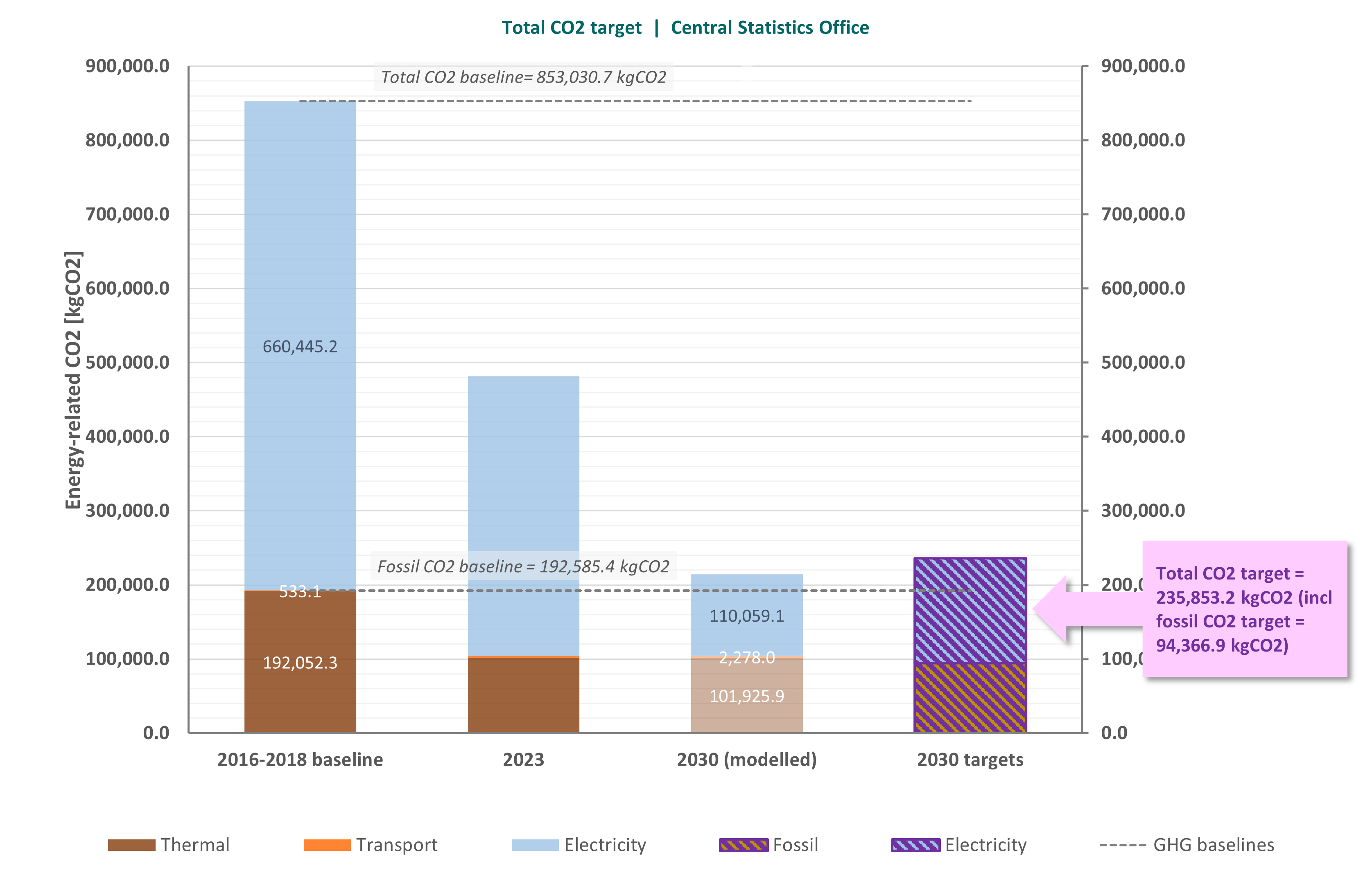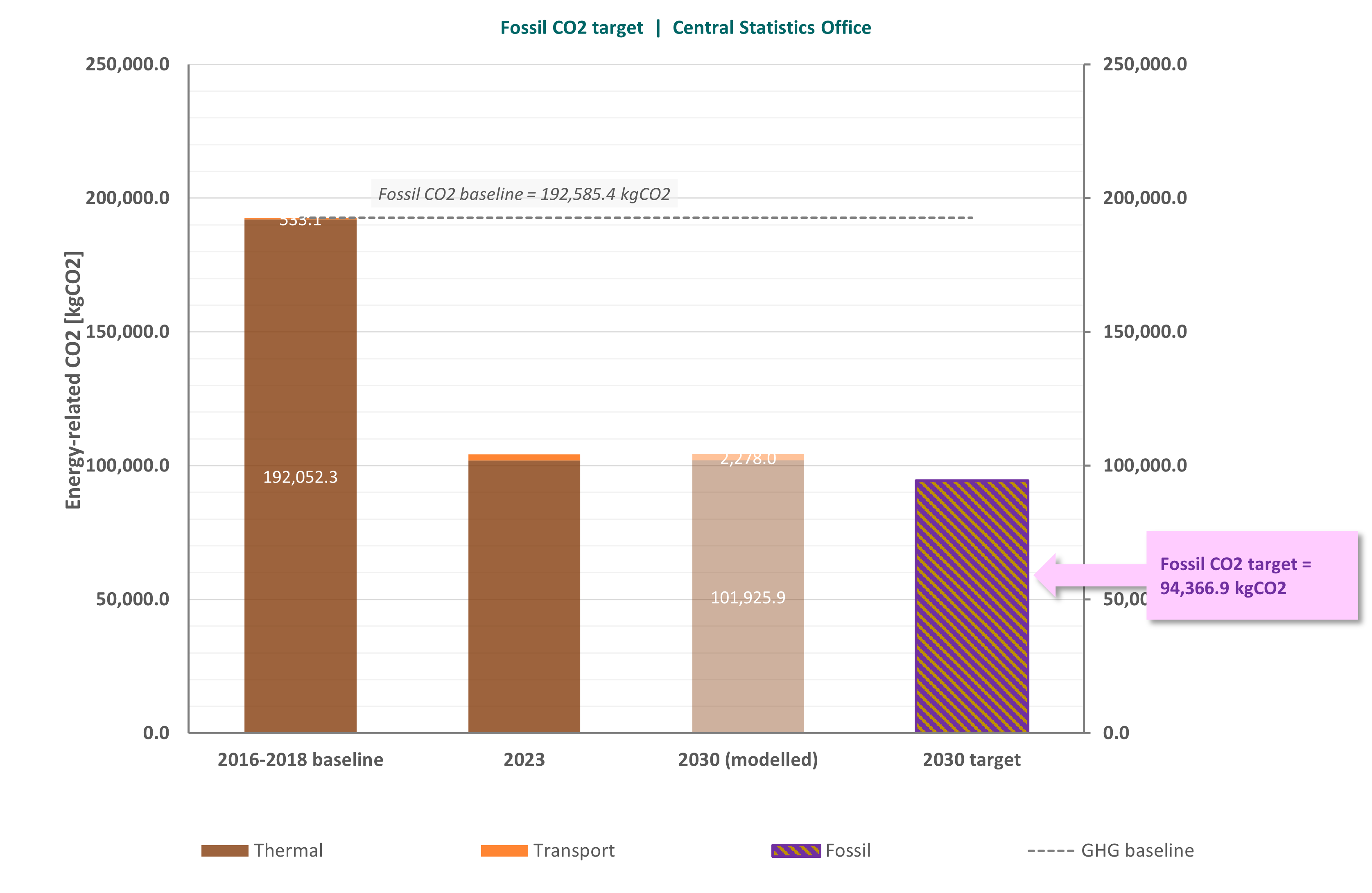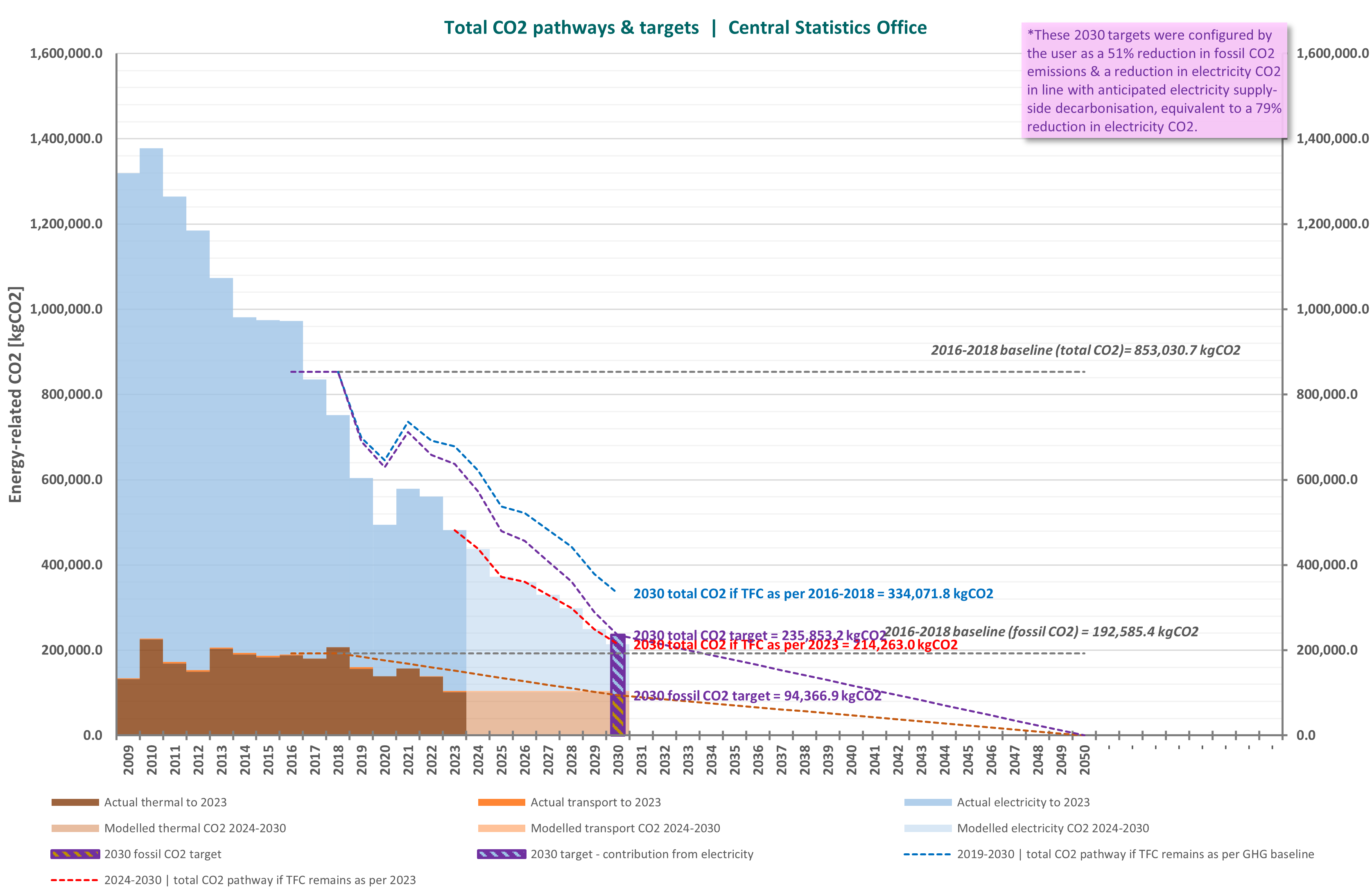The below graph sets out the composition and trajectory of the CSO’s energy related carbon emissions. The CSO must achieve a 51% reduction in Co2 emissions from the baseline of 2016-2018. The CSO has reached a reduction of 49.3% in the reduction of Co2 emissions, which means the CSO must reduce Co2 emissions by another 45.6% by 2030. The apparent discrepancy in the reduction requirements is due to the decarbonizing of the electricity grid. While the reduction required is 51%, when the decarbonizing of the grid is considered, the CSO must reduce Co2 emissions by 79%.

CSO’s energy consumption at the end of 2021 was 55.7% lower than the 2009 baseline. Therefore, the CSO must maintain this level to ensure the target is maintained and achieved.

The CSO will update the Climate Action Roadmap annually in line with updated Public Sector Climate Action Mandate.
The below graphs show how far the CSO need to go to achieve the target of 51% reduction in greenhouse gas emissions by 2030 and what the gap to that target is. With Figure 3 highlighting the total greenhouse gas target and Figure 4 highlighting the non-electricity greenhouse gas target.



There are several key challenges and opportunities facing the CSO in the management of the Sustainability targets set out in the Public Sector Mandate.
One challenge is how to balance inevitable growth of the organisation with sustainability targets. While the CSO are constantly striving to reduce emissions and improve energy efficiency, there is some risk of growth in the future based on CSO growth due to increased survey demands, and certain CSO cyclical work, e.g., Census of Population 2027. Much of this development will be online, but additional CSO staffing requirements will be needed to meet customer demands and deliver statistics for Ireland's increasing population.
However, this challenge leads to an opportunity in developing future work arrangements within our current constraints of space. With the introduction of the blended working model and the evolution of our IT systems, energy savings are possible. Significant investment will be required, but necessary to effect this change.
Another significant challenge for the CSO is the dependence on OPW to agree to and carry out much needed retrofitting works. Achievements to date have been reached by completing projects such as lighting retrofits and boiler upgrades, however for any further significant growth in our energy efficiency figures or our reduction in Green House Gas emissions, significant retrofit works are required. The CSO has registered with the OPW business stock plan, and we will continue to work with the OPW to progress works. Current initiatives being implemented in CSO offices for 2024:
| Office | Project | Project stage | Saving KwH |
| Swords | LED lighting retrofit | In progress | 24,587Kwh |
The CSO is not directly responsible for a sectoral emission ceiling, as set out in the Climate Action and Low Carbon Act 2021. However, a key strategic priority of the CSO is to assist policy makers and inform the public by providing data and insights related to key policy areas of climate, energy, and the environment.
Over the course of 2023/2024, the CSO has produced a range of novel and new statistics which highlight important trends in energy consumption and the energy efficiency of our national building stock. It has also produced data and insights into energy generation including the growth of solar energy, as well as signalling changes in the profile of non-residential energy consumption e.g. data centres.
Recognising the importance of decarbonizing the economy, the CSO has produced an annual view of decoupling emissions from key sectors of the economy, as well as highlighting the changing profile of environmental goods, services and subsidies.
The CSO also produces an annual view of the state of the environment through its environmental indicators report, which is supported and underpinned by a range of statistical releases including annual air emissions accounts, ecosystems accounts, forestry, etc.
The CSO is committed to continuing to develop this suite of data and insights to further support evidence-informed policy making for the climate and our environment.